I'm trying to calculate E12 resistor series myself.
Above is an illustration of the idea where such equation can be written:
x = r3 + r3 * %tol = r4 - r4 * %tol
form that we can derive:
r4 = r3* [(1 + %tol)/(1 - %tol)]
hence in generalized form we can write (%tol = 0.1 for E12 series);
r(i+1) = ri* [(1 + %tol)/(1 - %tol)]
But when I iterate the above formula in a for loop I obtain the following results for the first resistor values:
1.0000 1.2222 1.4938 1.8258 2.2315 2.7274 3.3335 4.0743 4.9797 6.0863 7.4388
Then I take [(1 + %tol)/(1 - %tol)] = 1.2 rounded value instead of 1.222222 and write the formula as:
r(i+1) = r(i)*1.2
But again when I iterate the above formula in a for loop I obtain the following results for the first resistor values:
1.0000 1.2000 1.4400 1.7280 2.0736 2.4883 2.9860 3.5832 4.2998 5.1598 6.1917
But the real values for E12 should be as:
1.0, 1.2, 1.5, 1.8, 2.2, 2.7, 3.3, 3.9, 4.7, 5.6, 6.8
What am I doing wrong here?
